Kitty Cut Hair Trend: 14 Chic Looks to Try Right Now
If you’ve been eyeing that feathered, face-framing look that’s all over your feed—but you want something more wearable than the wolf cut—the kitty cut is your sweet spot. Think soft layers, swoopy movement, and lift around the crown without going full shag. It flatters most hair types, adapts to different lengths, and plays beautifully with natural texture. Below, you’ll find 14 fresh kitty cut ideas, how to style them at home, maintenance tips, and FAQs so you can walk into your next salon visit with confidence.
Classic Collarbone Kitty Cut
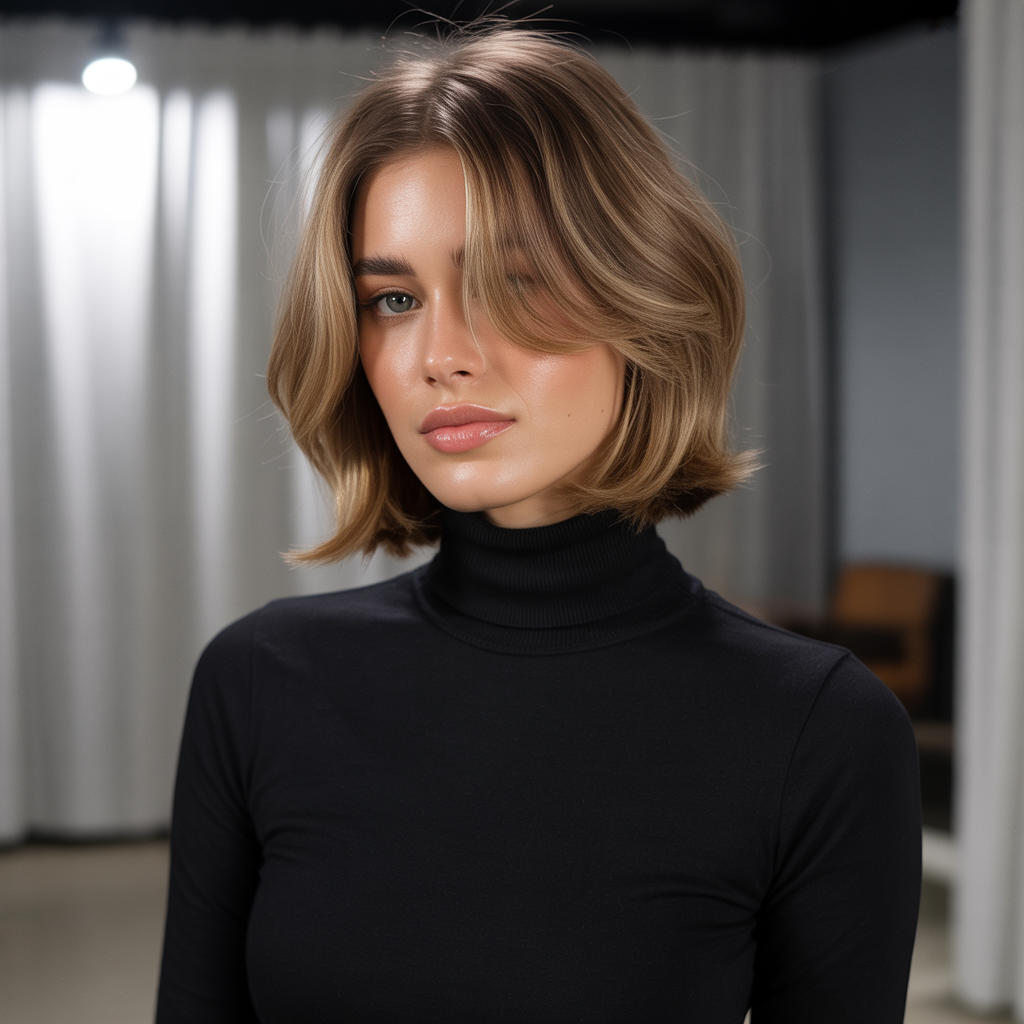
The collarbone length is universally flattering and sets the perfect stage for the kitty cut’s signature soft layers. Ask your stylist for long, blended face-framing pieces that start around the cheekbones and cascade into the ends. This keeps the look airy without removing too much density. A center or slightly off-center part enhances symmetry and elongates the neckline. Finish with a medium round brush for a curved, bouncy edge that grazes the collarbone.
Why it works: It’s long enough to tie back, short enough to feel fresh, and the layers add movement so hair doesn’t sit flat against the shoulders.
Long Kitty Cut with Butterfly Layers
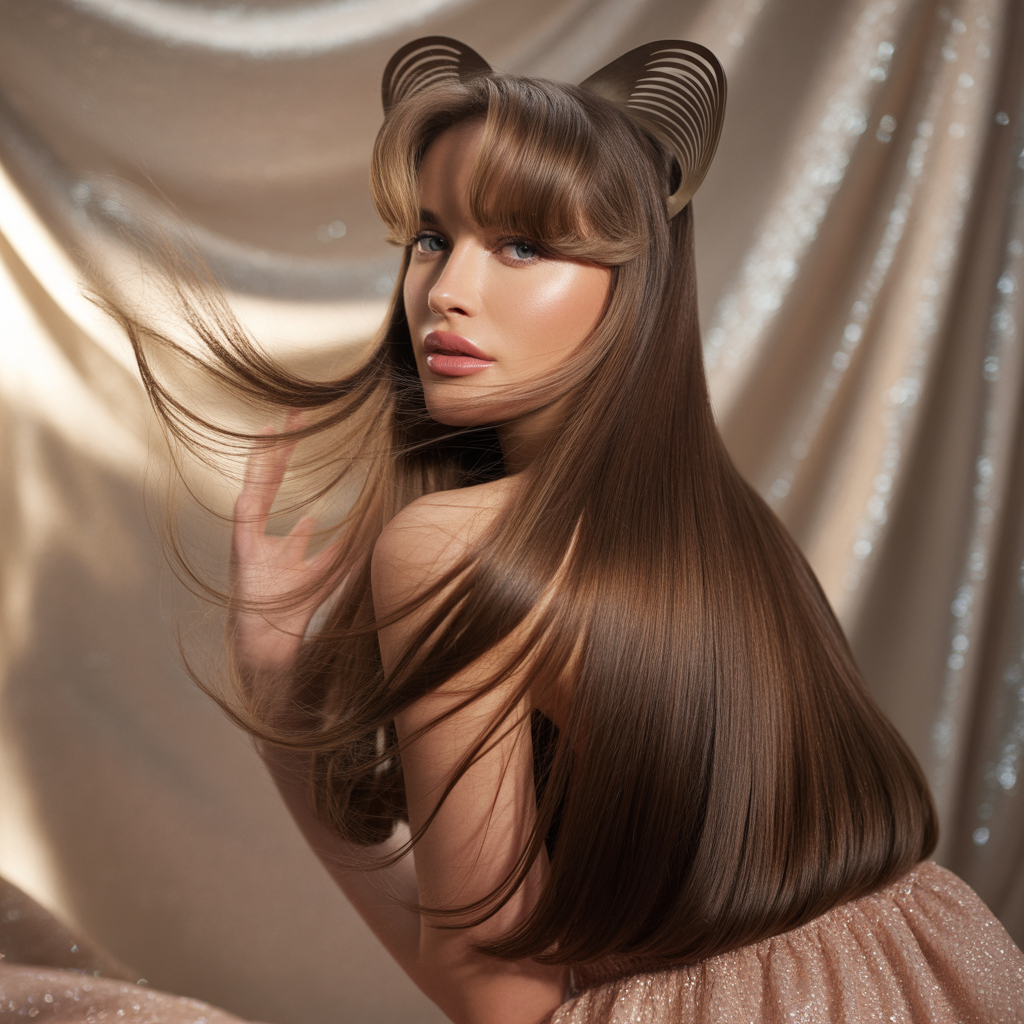
If you love length, go for a long kitty cut with butterfly-inspired layers. The front sections “float” away from the face, creating softness around the eyes and cheekbones. A subtle crown lift keeps the silhouette lively without veering too voluminous.
Styling tip: Use a large round brush and direct the front layers away from your face. Set with Velcro rollers while you do your makeup to lock in bounce without extra heat.
Micro-Bangs Kitty Cut
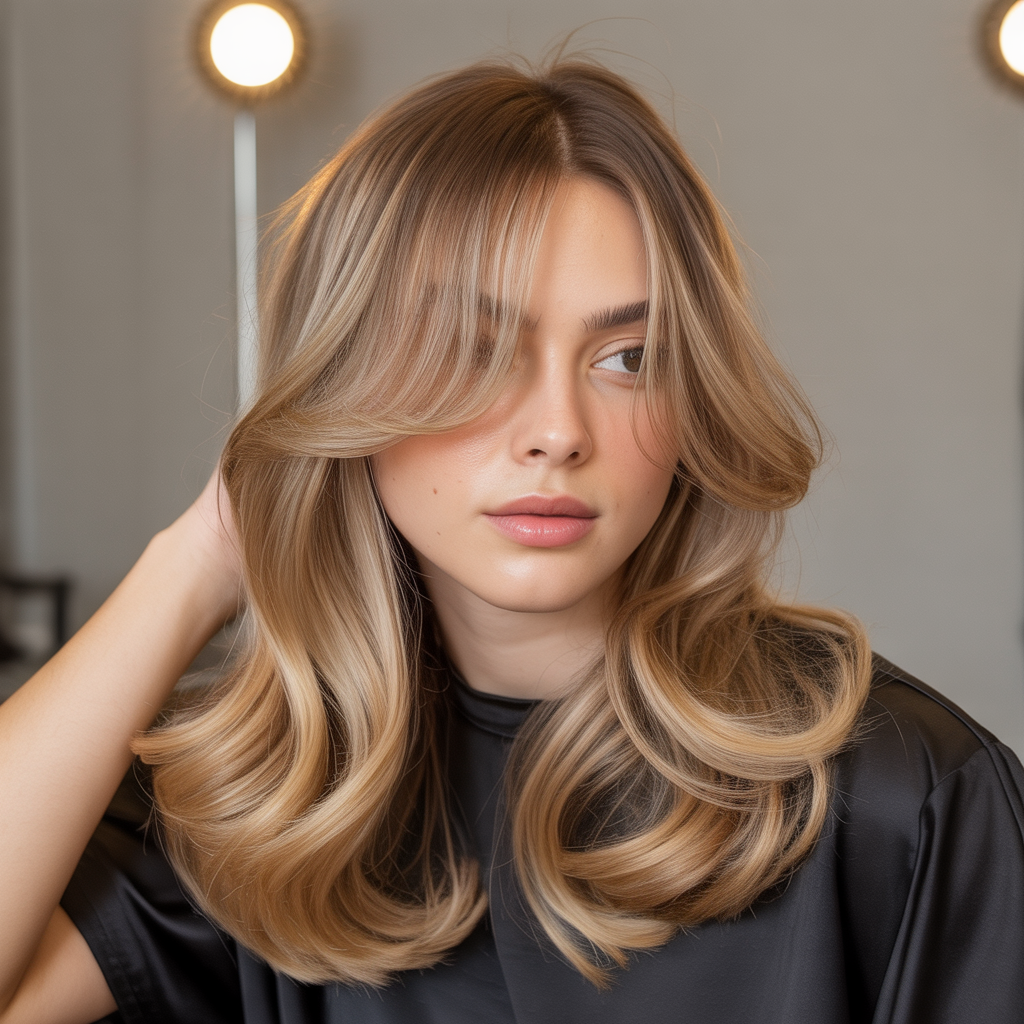
Micro-bangs add an editorial edge to the kitty cut. Keep the bangs feathered rather than blunt so they melt into the face-framing layers. This contrast of soft texture and short fringe feels modern and instantly elevates a basic cut.
Best for: Straight to wavy hair that can hold shape. If your hair is very curly, consider a longer, piecey fringe that won’t shrink above the brows.
Curtain Fringe Kitty Cut
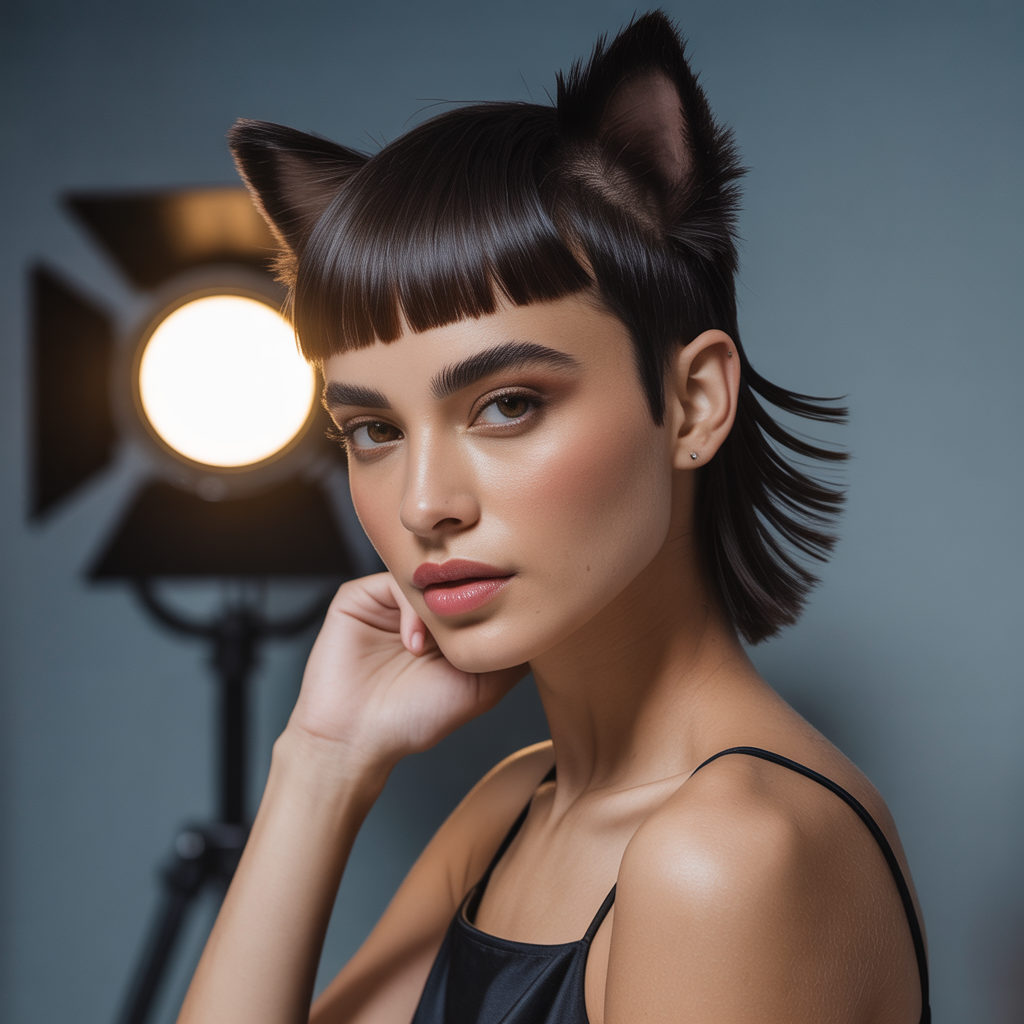
Curtain bangs are the gateway fringe for anyone nervous about commitment. They split in the middle, angle down around the eyes, and blend seamlessly into kitty cut layers. This pairing is ideal if you want a subtle face lift effect: the swoop opens the face, highlights your eyes, and balances stronger jawlines.
Maintenance note: Trim every 5–7 weeks to keep the split and flow; curtain fringe grows out nicely but can start to feel heavy without a light dusting.
Wavy Kitty Cut with Air-Dry Finish

For naturally wavy hair, the kitty cut is a dream. Ask for diffused, long layers with minimal thinning so your waves keep their spring. The goal is to encourage natural texture and remove the triangle shape that happens when one-length hair poofs at the ends.
At-home routine: Rake a lightweight curl cream through dripping wet hair, scrunch, and air dry. Once dry, spritz a flexible hairspray to add hold without crunch.
Fine-Hair Volume Kitty Cut
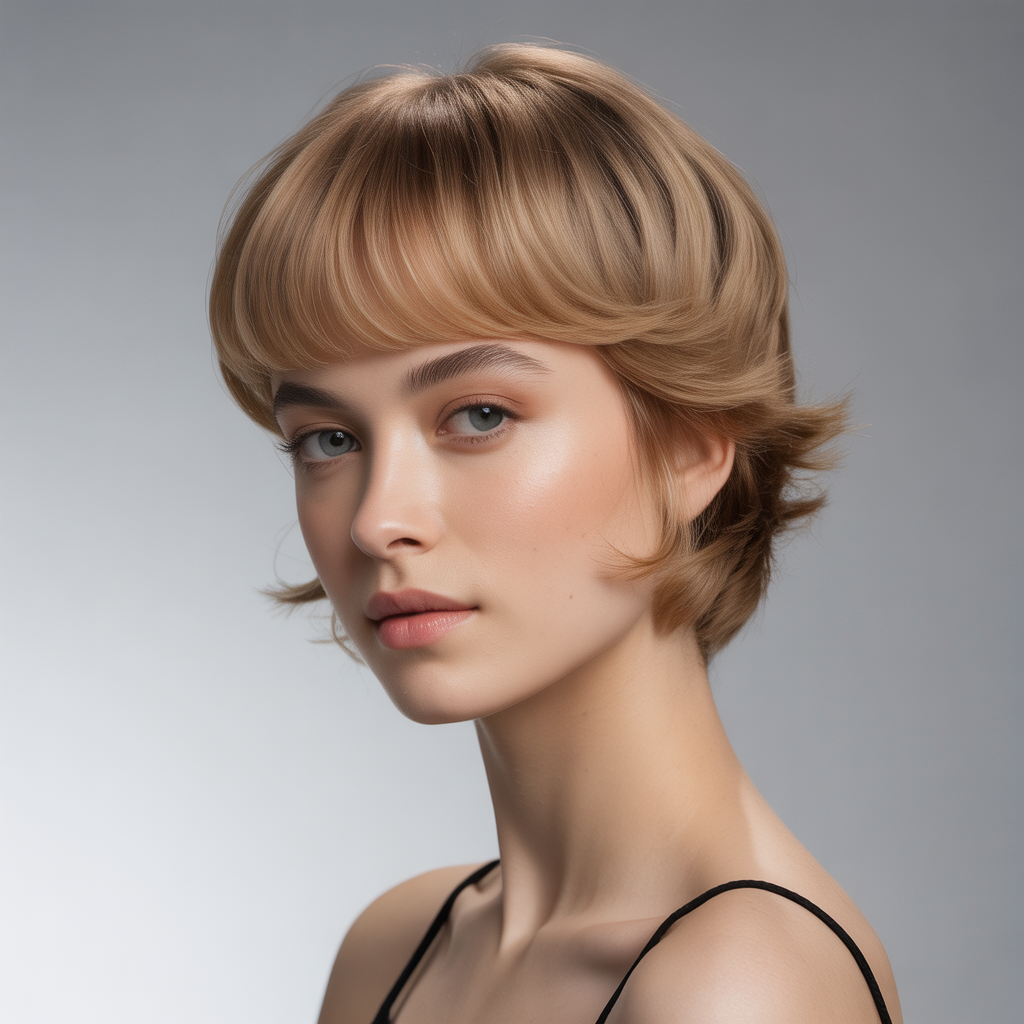
Fine hair loves the kitty cut’s soft elevation. Request a subtle crown layer and barely there face-framing to prevent the perimeter from looking wispy. Avoid heavy texturizing—over-thinning can make ends look stringy. The result is believable fullness that lasts beyond wash day.
Blowout hack: Flip your part to the opposite side while drying, then flip it back when finished for instant root lift.
Thick-Hair Tapered Kitty Cut
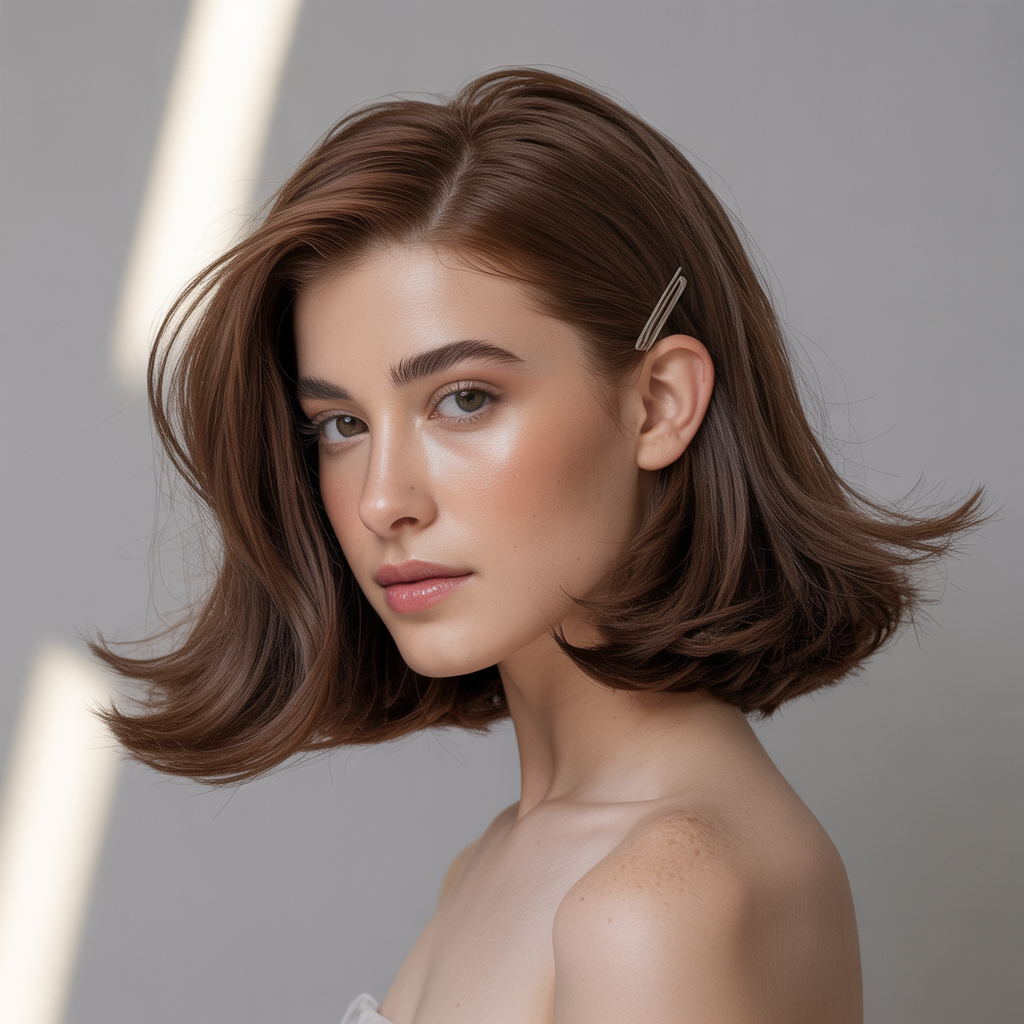
If your hair is dense, a tapered kitty cut removes internal bulk while keeping length. Ask for invisible layers—techniques like slide cutting or point cutting—to carve movement without visible “steps.” Keep the perimeter slightly heavier to avoid a choppy finish.
Heat control: Use a heat protectant and a paddle brush to pre-smooth, then finish with a wide curling iron to polish the face frame in two or three big sections.
Kitty Cut Bob
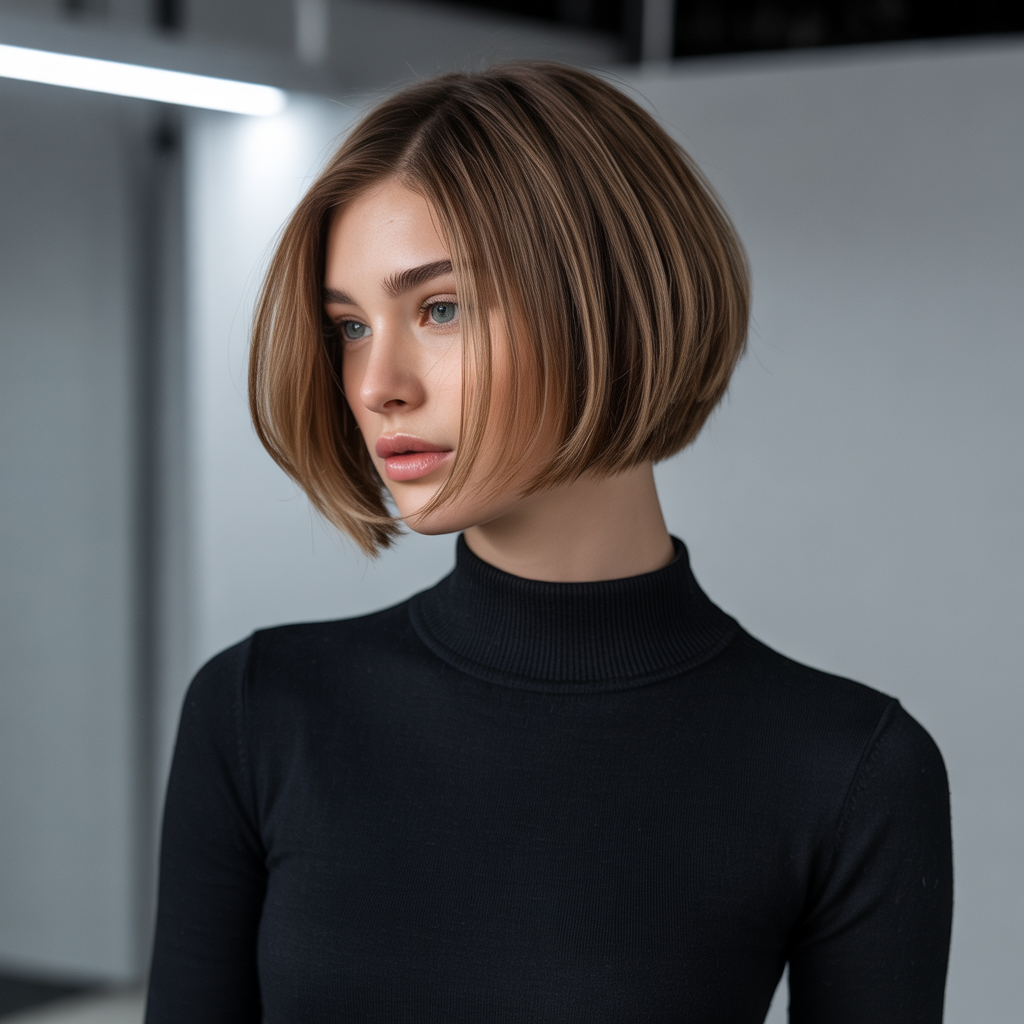
Shorter, but still soft. A jaw-to-chin bob with kitty cut layering brings bounce without stacking like a traditional graduated bob. The face frame is key: cheekbone-length pieces that flick away from the face give instant gloss-girl energy.
Styling note: A small round brush or hot brush can smooth the surface quickly. Finish with a drop of lightweight oil on the ends only.
Curly Kitty Cut with Face-Framing Layers

Curls and kitty cuts absolutely can coexist. Ask for curl-by-curl shaping: your stylist should assess how each curl pattern springs before snipping. The face frame should start no higher than the corner of the eye to avoid unwanted shrinkage.
Product pairing: A curl-defining cream plus a few drops of gel gives both moisture and hold. Scrunch out the crunch with dry hands for plush, touchable curls.
Kitty Cut with Long Face Frame and No Bangs
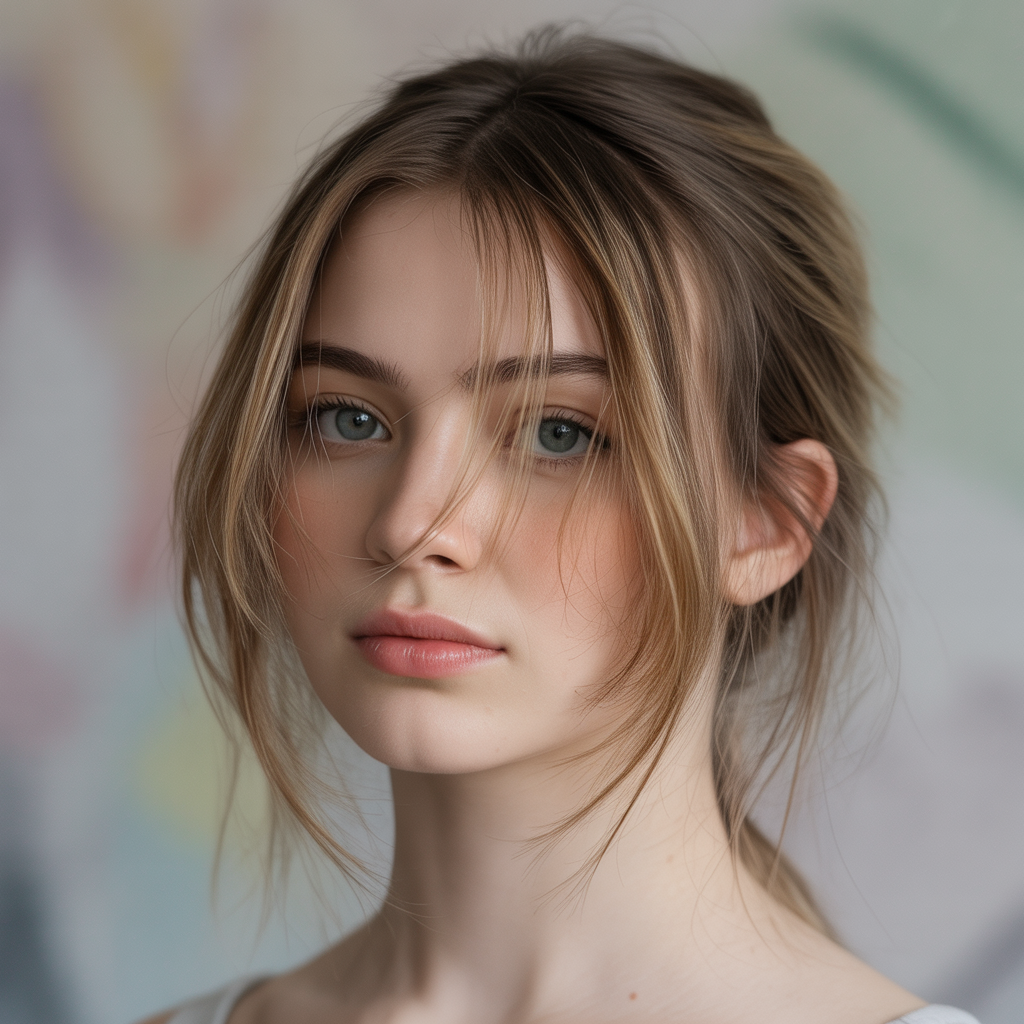
If bangs aren’t your thing, keep the front long. Start the shortest pieces just below the cheekbones so they swing back easily and don’t crowd the forehead. This option is ultra-low-maintenance and grows out gracefully.
On busy mornings: Toss hair into a loose, mid-height ponytail and pull a few face-framing pieces forward. You’ll look intentionally styled in under a minute.
Sleek Kitty Cut with Glass-Hair Shine
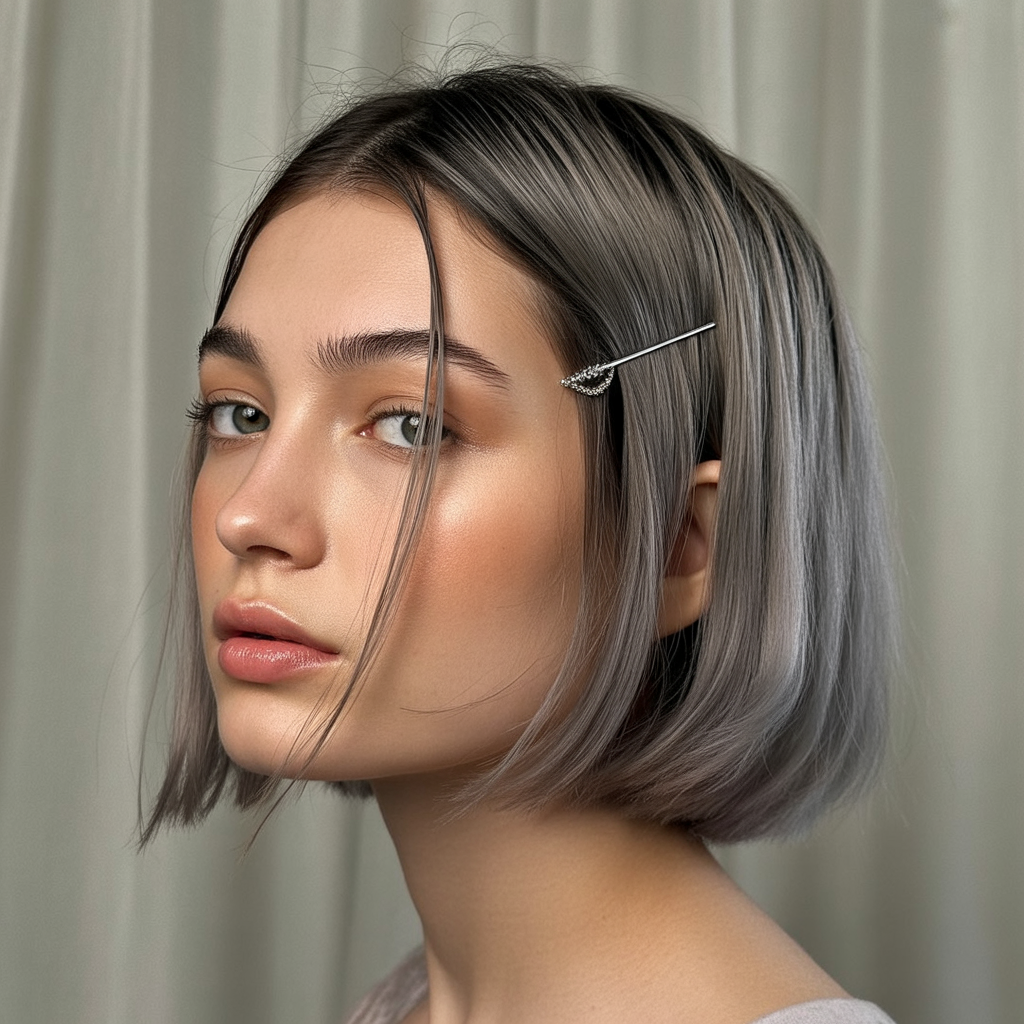
Prefer sleek over bouncy? The kitty cut can read polished with the right finish. After blow-drying, pass a flat iron once through the mid-lengths and ends, keeping the flick at the face frame. A shine spray or serum gives that reflective, “glass hair” result without making roots greasy.
Pro move: Keep the crown slightly lifted—pin two flat clips at the roots while you do your makeup, then remove to reveal soft volume.
Kitty Cut with Lived-In Texture

A little grit transforms the kitty cut into effortless, model-off-duty hair. Ask for diffused, piecey layers and skip ultra-clean lines. At home, a texturizing spray or dry shampoo at the roots plus a light sea-salt mist on the ends creates a soft, undone finish.
Second-day magic: Twist two loose rope braids before bed; in the morning, shake them out for easy movement aligned with the cut’s natural shape.
Color-Enhanced Kitty Cut
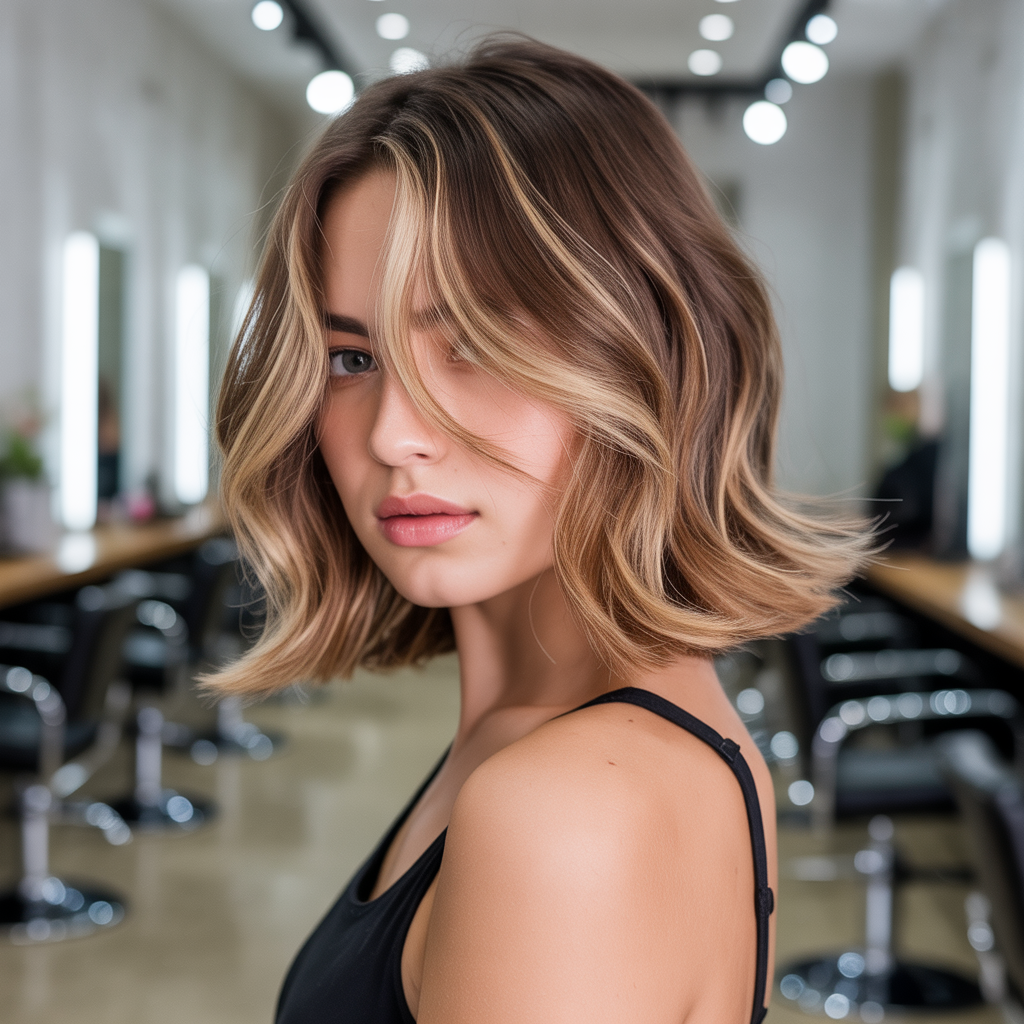
The right color placement highlights the kitty cut’s contours. Try soft, face-brightening “money pieces” or diffused balayage that starts mid-strand and lightens toward the ends. Low-contrast colors (think caramel on brunette, buttercream on blonde) keep the look plush and expensive.
Maintenance math: Opt for a root-shadow technique so you can stretch touch-ups to 8–12 weeks without harsh grow-out lines.
How to Ask for a Kitty Cut at the Salon

If you want the vibe without the upkeep, ask your stylist to keep layers long and minimal with a weight line that skims the collarbone or sits just below the shoulders. This version air-dries nicely and doesn’t demand regular bang trims. In your routine, rotate wash days with refresh days: perk up the front with a single round-brush pass and you’re done.
Why it lasts: The structure is built to grow out, so your shape looks intentional from week one to week ten.
How to Ask for a Kitty Cut at the Salon
Bring two to three reference photos that reflect the length, amount of face framing, and finish you want (sleek vs. bouncy vs. textured). Explain your daily styling habits honestly—if you never use a round brush, your stylist can tailor the layers to air-dry well. Mention lifestyle factors like workouts or headwear that might impact how your fringe sits.
Key phrases to use with your stylist:
- “Soft, blended face framing starting at the cheekbones.”
- “Crown lift without heavy layers.”
- “Minimal thinning on the ends; I want movement, not wispy tips.”
- “A finish that works with [my texture: straight/wavy/curly] and looks good air-dried.”
Yes, you can also say, “I want a kitty cut that feels wearable and soft—less wolf cut, more everyday bounce.” That single sentence gives great direction.
How to Style a Kitty Cut at Home
For bounce: After washing, apply a lightweight heat protectant and a volumizing mousse through the crown and mid-lengths. Rough dry to 80%, then switch to a round brush, lifting at the roots and beveling the ends inward. Set the front in two Velcro rollers while it cools.
For air-dry texture: Apply a leave-in conditioner to detangle, then scrunch in a wave foam or curl cream depending on your texture. Do not touch until fully dry to minimize frizz.
For second-day revival: Mist dry shampoo at the crown, brush through, then refresh the face frame with a big curling iron—two quick wraps are often enough.
Face-Shape Guide for the Kitty Cut
- Round: Ask for a slightly longer face frame starting below the cheek to elongate the face. A side part adds asymmetry and definition.
- Square: Keep the front soft and curved; avoid blunt, heavy bangs. Gentle layers that kick outward around the jawline soften angles.
- Oval: You can wear most versions—play with fringe and parting without fear.
- Heart: Add width below the cheekbones with swoopy layers; curtain fringe helps balance a narrower chin.
- Long: Opt for a breezy curtain fringe and avoid too much crown height; keep volume through the sides.
Maintenance and Upkeep
Plan trims every 8–10 weeks to keep the layers lively and the ends fresh. Fringe may need a dusting around the 5- to 7-week mark. Use a heat protectant whenever you style, and switch to a lightweight reparative mask once a week if you heat style often. If you color, a gloss every 6–8 weeks maintains shine without committing to a full retouch.
Common Mistakes to Avoid
- Over-texturizing the ends: Can read wispy, especially on fine hair.
- Layers starting too high: The kitty cut is soft, not choppy; face framing should flatter, not swallow your cheeks.
- Ignoring your natural part: Where your hair naturally splits will influence how the face frame lays.
- Heavy styling products: Opt for airy formulas to preserve swing and bounce.
Products That Pair Well with a Kitty Cut
- Lightweight volumizing mousse for root lift without crunch.
- Heat protectant spray every time you use hot tools.
- Flexible hairspray to set rollers and bangs softly.
- Dry shampoo or texturizing spray for second-day shape.
- Light finishing oil or serum only on ends to prevent flyaways.
FAQs (Reality-Based Searches)
Q1: Is the kitty cut the same as the wolf cut?
No. The wolf cut is shaggier and more heavily layered, often with noticeable disconnection and a mullet-ish vibe. The kitty cut has gentler layers, a softer face frame, and a more classic silhouette that’s easier to style daily.
Q2: Will a kitty cut work on thin hair?
Yes—when tailored correctly. Ask for minimal texturizing and a subtle crown layer to create lift without removing density. Avoid heavy thinning shears on the ends; a soft face frame plus a volumizing mousse can make fine hair appear fuller.
Q3: How do I style a kitty cut without heat?
After washing, apply a lightweight leave-in and a wave or curl cream (based on your texture). Part hair where it naturally falls, scrunch gently, and let it air dry. Clip the crown with two flat root clips as it dries to encourage lift without heat.
Q4: How often should I trim a kitty cut with curtain bangs?
Most people maintain the overall shape every 8–10 weeks and dust the curtain fringe around 5–7 weeks to keep the split and swing. If your bangs grow fast or you like a shorter curtain, you may prefer a 4–6 week bang trim.
Q5: Can I get a kitty cut if I have curly hair?
Absolutely. Ask for curl-sensitive layering and a face frame that starts no higher than the outer corner of the eye to account for shrinkage. Use curl-friendly products (cream + gel), diffuse on low, and scrunch out the crunch once fully dry for defined, soft curls.
Final Thoughts
The kitty cut wins because it’s adaptable: you can go short or long, sleek or tousled, fringe or no fringe—without losing that gentle, flattering movement. The right version will enhance your features, respect your natural texture, and fit your real routine. Bring clear photo references, speak honestly about your styling habits, and ask your stylist to tailor the face frame and crown height to you. With a little product savvy and timely trims, you’ll keep that airy, soft swing that makes the kitty cut so wearable.
Conclusion
Ready to try it? Save two or three reference photos that capture your favorite length and finish, decide whether you want curtain bangs or longer face framing, and share your daily styling reality with your stylist. With those details and the ideas above, you’ll walk out with a kitty cut that feels polished, modern, and unmistakably you.







